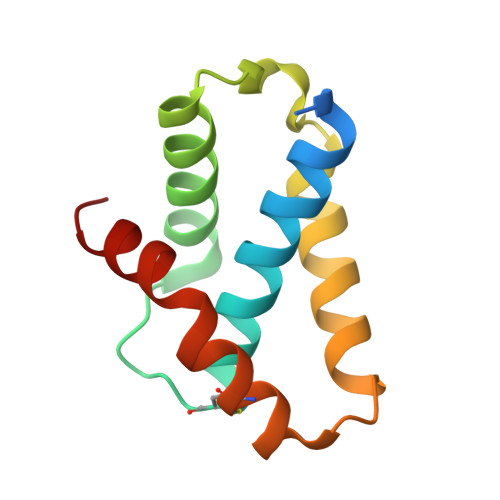Anatomy of secretin binding to the Dickeya dadantii type II secretion system pilotin.
Rehman, S., Gu, S., Shevchik, V.E., Pickersgill, R.W.(2013) Acta Crystallogr D Biol Crystallogr 69: 1381-1386
- PubMed: 23897461
- DOI: https://doi.org/10.1107/S0907444913007658
- Primary Citation of Related Structures:
4K0U - PubMed Abstract:
The secretins are a family of large multimeric channels in the outer membrane of Gram-negative bacteria that are involved in protein export. In Dickeya dadantii and many other pathogenic bacteria, the lipoprotein pilotin targets the secretin subunits to the outer membrane, allowing a functional type II secretion system to be assembled. Here, the crystal structure of the C-terminal peptide of the secretin subunit bound to its cognate pilotin is reported. In solution, this C-terminal region of the secretin is nonstructured. The secretin peptide folds on binding to the pilotin to form just under four turns of α-helix which bind tightly up against the first helix of the pilotin so that the hydrophobic residues of the secretin helix can bind to the hydrophobic surface of the pilotin. The secretin helix binds parallel to the first part of the fourth helix of the pilotin. An N-capping aspartate encourages helix formation and binding by interacting favourably with the helix dipole of the helical secretin peptide. The structure of the secretin-pilotin complex of the phytopathogenic D. dadantii described here is a paradigm for this interaction in the OutS-PulS family of pilotins, which is essential for the correct assembly of the type II secretion system of several potent human adversaries, including enterohaemorrhagic Escherichia coli and Klebsiella oxytoca.
Organizational Affiliation:
School of Biological and Chemical Sciences, Queen Mary University of London, Mile End Road, London E1 4NS, England.















